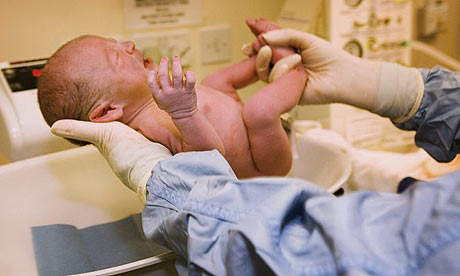
Scientists have developed a way to harvest stem cells efficiently from placentas after birth, opening up a potential new source of the cells which can be used to treat a wide range of illnesses including sickle cell disease, thalassaemia and leukaemia.
Frans Kuypers of the Children's Hospital and Research Centre in Oakland, California, led a team to extract the stem cells and found that placentas contained up to five times as many as cord blood, which has been used in recent years as a source of similar cells. His techniques are described in the latest edition of the journal Experimental Biology and Medicine.
"Yes, the stem cells are there; yes, they are viable; and yes, we can get them out," said Kuypers. His team harvested the cells from the placentas of healthy women undergoing elective Caesarean sections. He believes the technique could probably be further optimised in future to harvest even more of the stem cells.
Stem cells are the body's master cells and can be turned into almost any type of tissue – from brain cells to blood cells. The most versatile come from embryos but, because harvesting these results in the destruction of the embryo, many scientists are investigating other sources. Adults have stem cells too, for example in bone marrow, but these are less versatile than their embryonic cousins.
A lot of recent attention has therefore focused on the potential of cord blood and placentas, which can be collected without any risk to babies, as a source of stem cells. Increasingly parents have been freezing the cord blood of their newborn children in the hope that it might one day prove useful for treatments.
In his analysis, Kuypers showed that placenta stem cells have many of the characteristics of cord blood stem cells and might be even more "primitive", meaning they are more versatile.
Scientists at the Children's Hospital in Oakland have already treated more than 100 children suffering from blood-related diseases using stem cells taken from the cord blood of siblings. But when a patient receives a cord blood transplant, said Kuypers, there are often not enough stem cells to treat their condition. Placentas may be a more rich source of the cells. "The more stem cells, the bigger the chance of success."
His team's new technique uses drugs normally used to extract stem cells from bone marrow. The placenta is frozen after birth and treated with the drugs later, to avoid any harm to the baby or new mother.
The technique would allow companies to gather and process placentas at a central location. "We're looking for a partnership with industry to get placenta-derived stem cells in large quantities to the clinic," said Kuypers. "Someday we will be able to save a lot more kids and adults from these horrific blood disorders."

